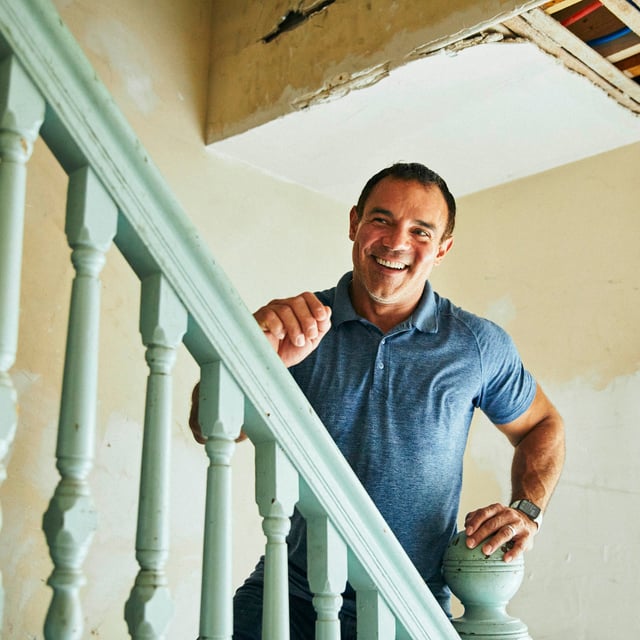
Remodeling
How to Renovate in Brooklyn
05.22.2025
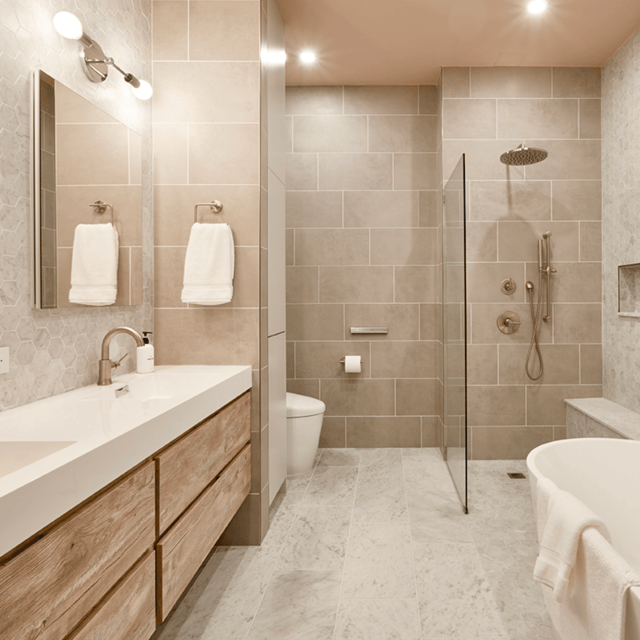
In This Article
A bathroom renovation is a project that many New York homeowners will consider at some point. Understanding the process and costs involved is crucial for effective planning and decision-making. Cost, timelines and permit requirements for a bathroom remodel in New York can vary significantly based on several factors, such as your design vision and your condo or co-op board requirements.
Block Renovation has helped New Yorkers remodel more than 700 bathrooms. We’ve put together this guide with answers to the most common questions homeowners have as they begin their bathroom remodel journey. We’ll also show you some amazing NYC bathroom remodel makeovers that were brought to life using Block’s platform.
The average cost of a New York bathroom remodel can range widely. This variance is primarily due to the size of the bathroom, the quality of materials and fixtures chosen, and the complexity of the work required.
For example, in NYC, a more basic bathroom renovation may cost $34,000 dollars, while a large, high-end renovation can easily run up to $60,000. When you book a free consultation with Block, your dedicated renovation consultant will help you learn more about the costs you can expect based on your bathroom renovation details.
Labor is often one of the most significant expenses, particularly if you’re planning major changes that require relocating plumbing, adding electrical, or structural work. Labor costs can differ, so you should always get multiple quotes. Block makes it easy to get and compare bathroom remodel quotes from up to 3 top quality, vetted NY contractors.
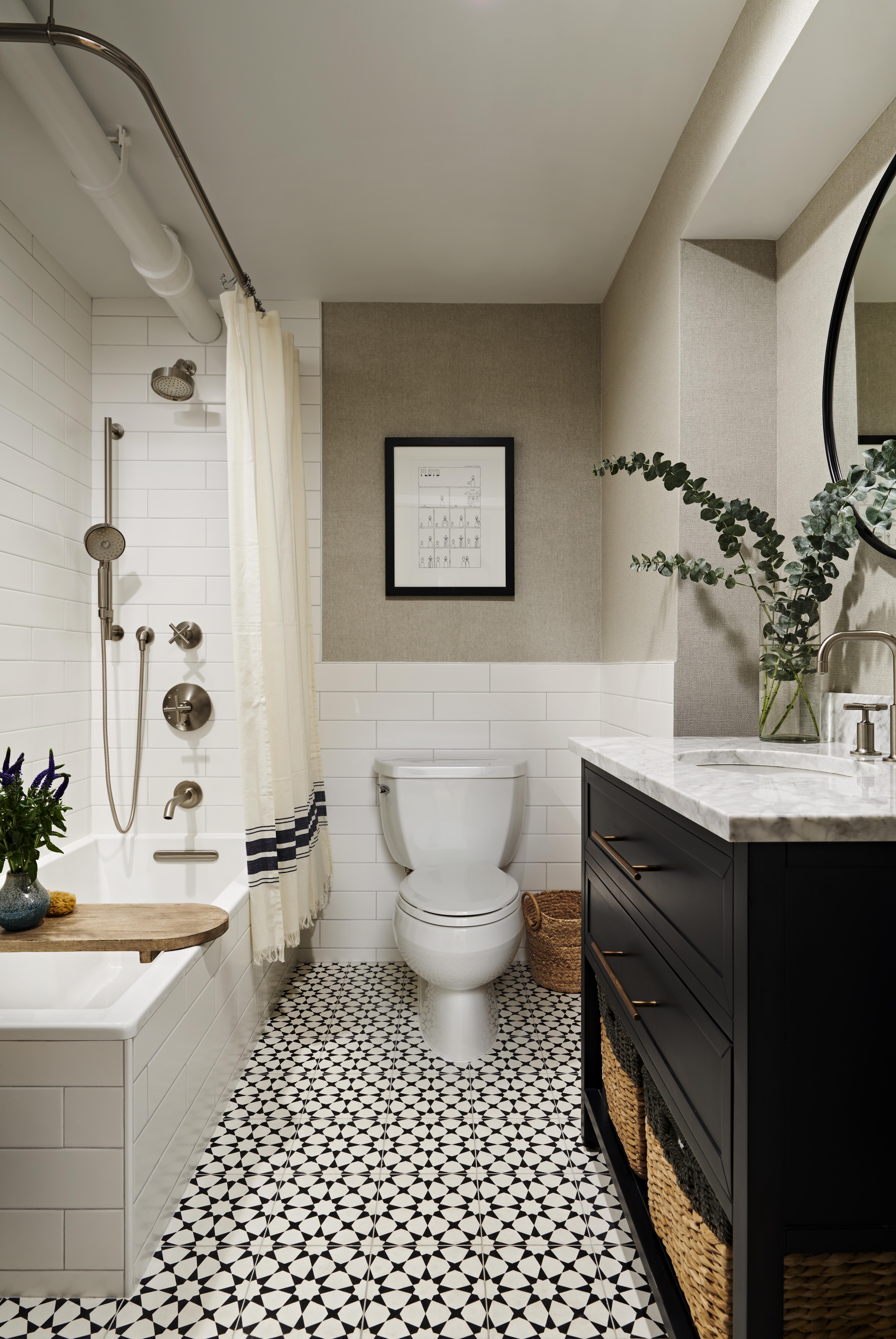
The quality and cost of materials also play a huge role. High-end finishes like natural stone countertops, a jetted tub, a washlet toilet, or a custom vanity can quickly escalate the budget.
Unexpected issues, such as the discovery of mold or structural problems, can add to the cost. To be on the safe side, be sure to set aside funds for contingencies.
The duration of a bathroom renovation project can vary significantly depending on several factors, including the scope and complexity of the project, the size of the space being renovated, the availability of materials and labor, and unforeseen circumstances that may arise during the construction process.
The time between when you decide to commit to your bathroom remodel and when you can actually break ground will depend on a number of factors. Permits and condo/co-op board approvals are the #1 driver of break ground dates in NYC. However, whether or not you have designs, materials lead times, and contractor availability will also play a role in your remodel start date.
Unexpected situations, like conditions that were not visible prior to break ground or delays in materials, can lead to longer than expected construction timelines.
Remodeling a New York City apartment requires you to get specific permits depending on the purpose and nature of the work. Type 2 permits are required when the alterations do not change the purpose of the apartment or the number of occupants it accommodates. For example, The NYC Department of Buildings requires permits for plumbing and electrical construction work.
Another complicating factor to renovating bathrooms In New York, is that many NYC homeowners live in a building with a co-op or condo board. The board approval process for a renovation project ensures that the proposed renovations comply with the building's rules, regulations, and any applicable legal requirements.
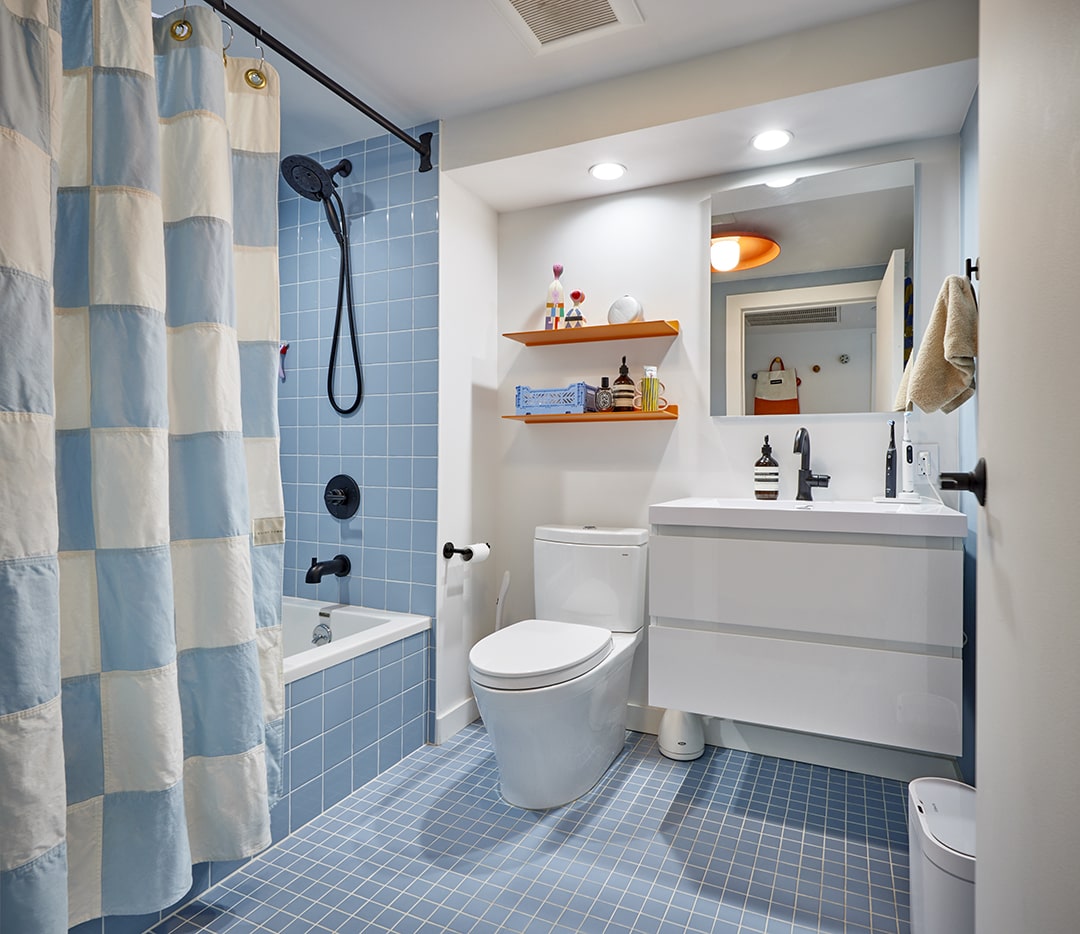
While the specific steps and requirements can vary depending on the building and its governing documents, here is a general outline of the board approval process:
Know the Rules: Check building bylaws, leases, or declarations for renovation regulations, permits, noise restrictions, insurance needs, and approval processes.
Plan it Out: Develop detailed plans with professionals if needed, including floor plans, specifications, and any structural documents. Gather insurance certificates, contractor qualifications, and any required permits.
Submit Application: Complete the board's form with project description, timeline, contractor info, and disruption mitigation plan. Submit it to the management office or designated representative.
Board Review: While not always necessary, be prepared to present your plans, address concerns, and demonstrate compliance with building guidelines during an architectural review or board interview.
Approval & Conditions: If approved, the board may set conditions like specific contractors, work hours, or additional insurance. Carefully review and comply with them.
Obtain Permits: Secure any necessary city or regulatory permits before starting work. The board may require proof of approval for final project go-ahead.
Sign Agreements: In some cases, sign an alteration agreement outlining your responsibilities, building requirements, and potential liabilities. Review and sign carefully.
It is important to note that this is a general overview, and approval processes can vary depending on home type and management company. It's best to consult the building's management, review the governing documents, and seek guidance from professionals experienced in navigating the board approval process in your specific building and jurisdiction.
The planning phase lays the groundwork for your bathroom renovation project. During this stage, you'll outline your goals, establish a budget, and gather inspiration. It's essential to spend sufficient time in this phase to avoid potential hiccups later on. At Block, you’ll have a renovation consultant who can help you think through all of this. You’re also encouraged to peruse our Gallery to find inspiration in other newly renovated New York Bathrooms. Better still, use our Renovation Planner to visualize what remodeling changes big and small could look like in your own bathroom.
The design phase is where your renovation vision takes shape. There are so many design decisions to make with a bathroom remodel that it may be helpful to work with an interior designer to develop detailed plans.
The design phase timeline typically lasts around 2-6 weeks, but it can vary based on the project complexity and rounds of revision and feedback. When you remodel your New York bathroom with Block, you have the option of adding additional support from expert designers who can work with you to build these plans.
The pre-construction phase is all about preparation and ensuring that everything is in place before construction commences. This phase includes contractor selection, scheduling, ordering materials, and procuring necessary permits and materials. Timelines can vary greatly depending on material section, project scope, and building approval timelines, but on average we’ve found that pre-construction lasts 5-12 weeks.
The construction phase is when your vision comes to life. It involves the physical execution of the project, coordination with a general contractor, and regular site visits.
New York homeowners often need to be ingenious to maximize every square inch, particularly those in dense areas like Manhattan or Downtown Brooklyn. This demand for clever solutions is especially true when tackling the unique challenges of small bathroom remodels. But even with minimal square footage, multiple essential fixtures, and sometimes limited natural light, you can design a bathroom that feels serene, spacious, and welcoming.
Tips for renovating smaller New York bathrooms:
Modern design refers to the design era that came about in the ’30s and lasted through the ’60s or ’70s. In bathroom renovations, stylistic classic modern elements include the importance of simple form and function and a reliance on natural materials like stone, wood, and leather that add warmth. Additionally, modern bathrooms tend to feature open-concept floor plans, luxe materials like marble and brass, and seamless glass shower door.
As House Beautiful explains, “whites, beiges, and even some shades of black are the main color palette for modern design, but it can incorporate color as an accent, so long as it leans toward earthy.”
Choosing a modern shower tile for your bathroom remodel can be especially overwhelming with all of the colors, shapes, sizes, materials, and configurations available. Modern shower tiles are characterized by clean, straight lines, neutral hues, and an unfussy, streamlined aesthetic—think black and white subway tile, contemporary horizontal stacked tile, or neutral herringbone tile.
Luxury main bathrooms are the epitome of relaxation, elegance, and functionality. These bathrooms are designed to be a sanctuary for homeowners to unwind and rejuvenate after a long day. With sleek lines, high-end finishes, and state-of-the-art technology, this sort of bathroom is sure to make a statement.
Natural materials like marble, granite, and other natural stones are perfect for creating a luxurious and sophisticated look— with the additional benefit of being durable and easy to clean.
Technology is a must-have in a luxury modern bathroom. Features such as heated floors, a rain shower, and a steam shower are not only functional but also add to the spa-like atmosphere. A digital shower system allows you to control the temperature, pressure, and flow of water with the touch of a button. This can be especially helpful for those who want a consistent water temperature and pressure.
Learn More: New York City Apartment Renovation Tips
For a New York homeowner, one of the renovations that can yield the greatest ROI is building an entirely new bathroom. We get it—this is easier said than done. However, even those in a smaller Manhattan condo may not be entirely out of options. When determining if your home can accommodate an extra washroom—and how— consider:

Homeowner Matt, residing in Greenwich Village, skillfully balanced budget and style during his 40-square-foot bathroom renovation with Block. By maintaining the original layout and preserving the existing bathtub, he managed to cut costs. His vision for the Manhattan bathroom renovation was to create a space that felt modern yet timeless, achieved by pairing a vibrant green wall with a natural wood vanity and brass accents.
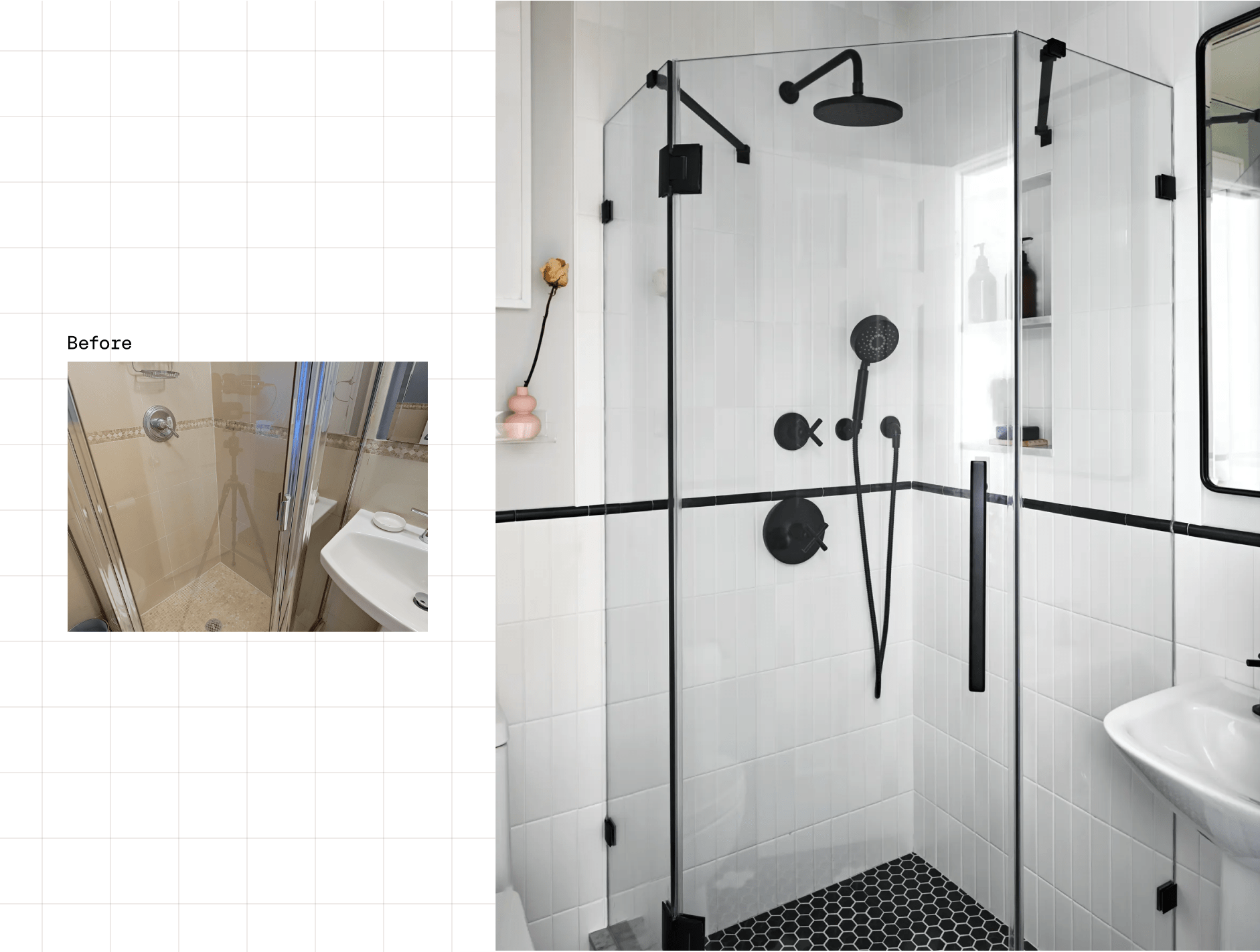
For Chris and Ryan, who recently moved to Clinton Hill, updating the two bathrooms in their Brooklyn condo was a top priority. Previous renovations had been difficult, but their project with Block was significantly smoother. Chris explained, “Compared to what we’ve done before, the build was so much more seamless and communicative. Our contractor was amazing to work with, was extremely responsive and thoughtful throughout the whole process.”

Chris and Ryan designed with black and white elements throughout their apartment, adding in accents of color. For their renovated bathrooms, they opted to create two unique looks: the black and white bath to suit Chris’s “clean-lined and structured” personality, and a playful pink bath to reflect Ryan, who Chris described as, “artsy, creative, and out there.” The 40-square-foot bath blends classic elements like white subway tile and brass fixtures with whimsical elements like the arched mirror and green shower curtain.

Grace, a first-time renovator residing in Williamsburg, aimed to transform her 40-square-foot bathroom with a tub-to-shower conversion. Her Brooklyn apartment's aesthetic, a fusion of bohemian and classic elements, was maintained in the bathroom design, where she incorporated whimsical, patterned tiles into the wall niche. Grace shared, “I truly cannot be happier. It feels like I'm going to the spa every time I go to the bathroom, so I'm thrilled... I had never witnessed a renovation ever, so I was very nervous. It was super smooth."
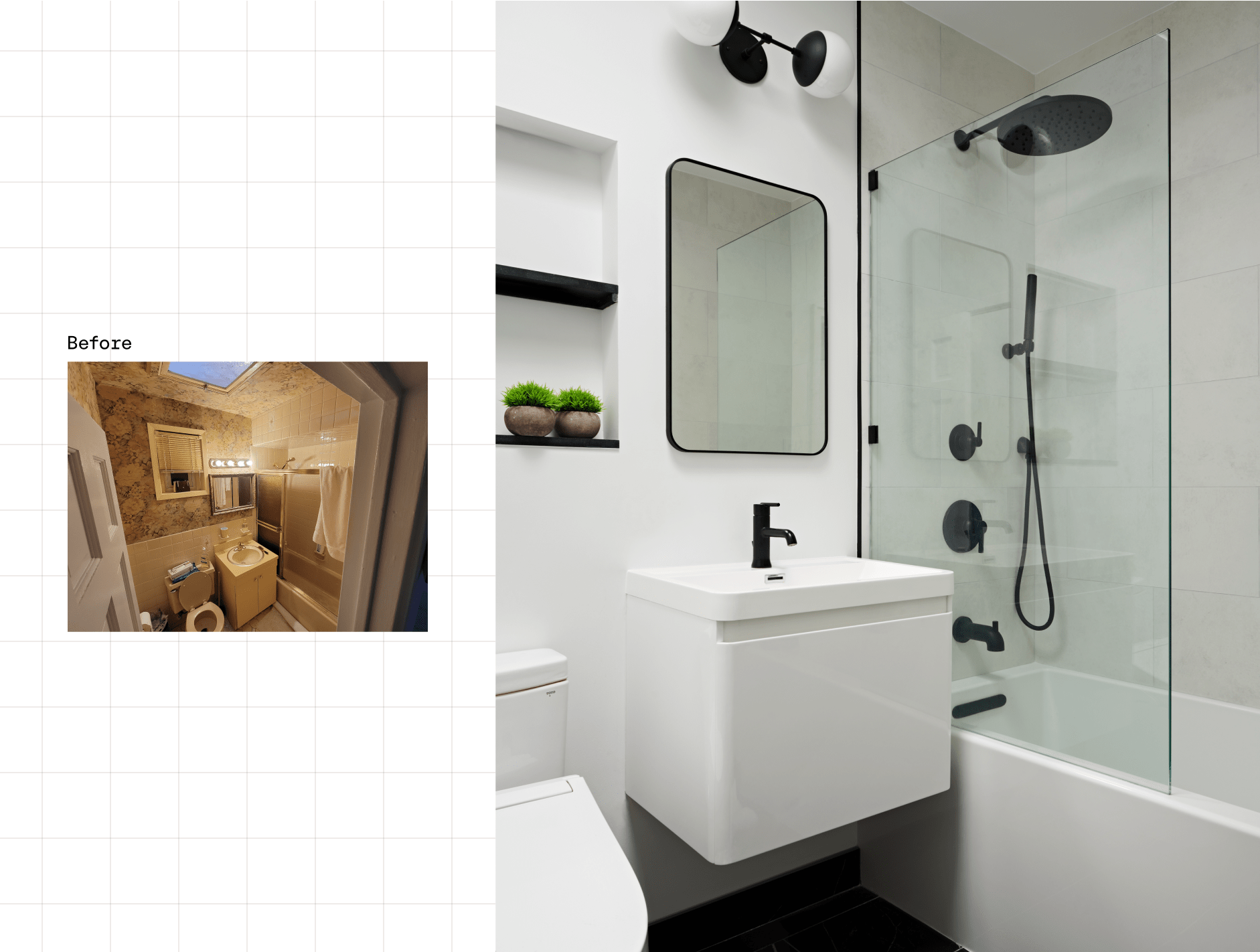
In Sheepshead Bay, Peter undertook a significant makeover of his outdated bathroom, turning it into a contemporary, sleek retreat. During the renovation, he focused on enhancing storage options for the 40-square-foot room, incorporating both open shelving and a vanity to achieve a clutter-free space.
Your contractor is the single most important part of any bathroom renovation, large or small. They’ll be your main point-person, troubleshooter, and expert guiding your project to completion. Because of their outsized importance, it’s critical that you pick the best person for the job. But finding a quality contractor can be confusing and time-intensive. Where do you begin? How do you know which ones are right for you?
Block makes it easy by matching you with up to 3 New York bathroom remodel contractors from our elite network. Our robust vetting process ensures that every contractor has:
Plus, you’ll have an opportunity to meet the contractors Block matches you with when they come to your home for a site visit to prepare your proposals.
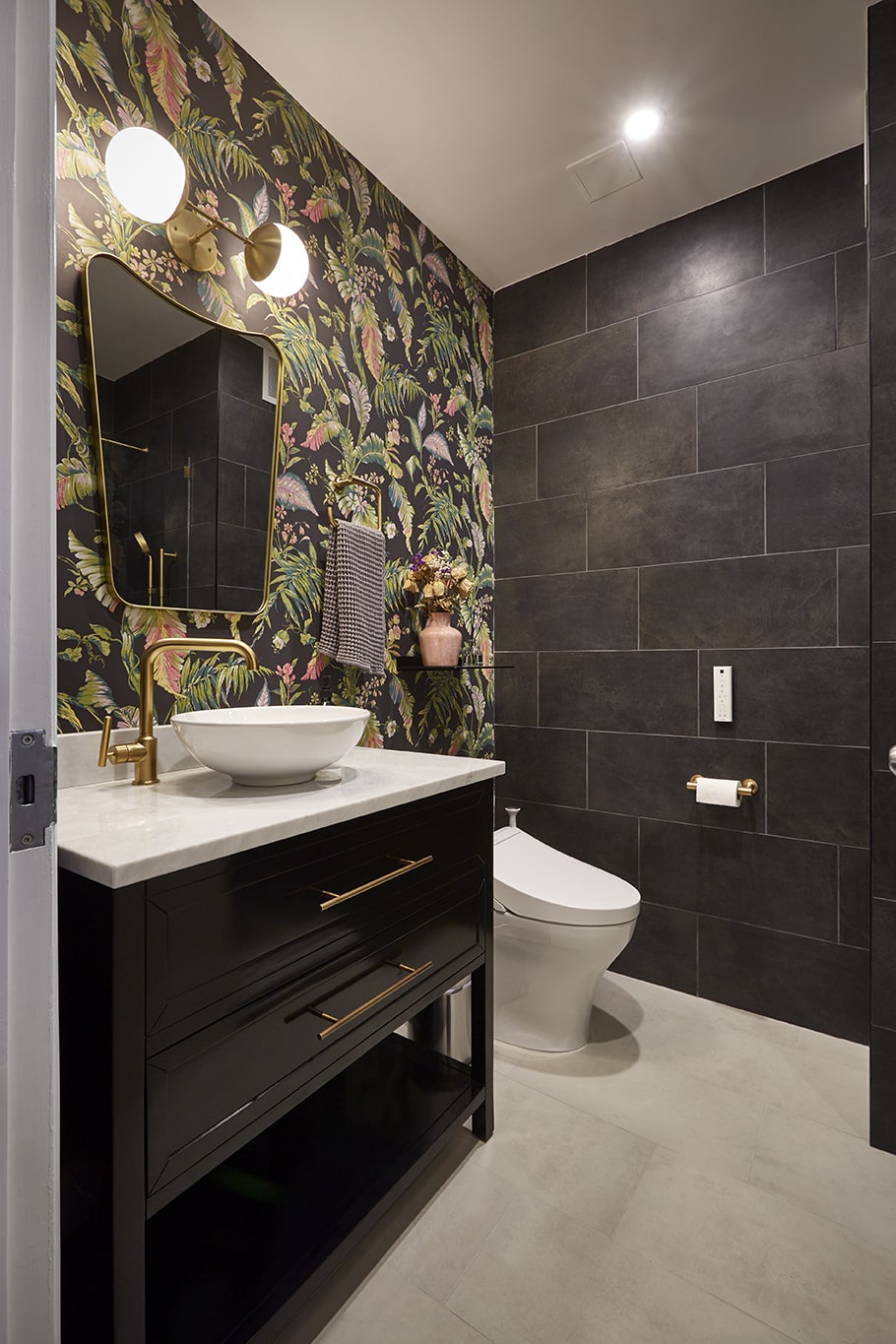
The team at Block Renovation has learned a lot from helping more than 700 New Yorkers remodel their bathrooms. Our goal is to enable you to tackle your renovation confidently with top quality contractors, warranty and price protections and access to expert resources. Get started with your New York City bathroom renovation today!
How much does a bathroom remodel cost in NYC
How long does it take to complete a bathroom remodel in NYC?
Do I need a permit to remodel my bathroom in New York City?
What are some space-saving design ideas for small NYC bathrooms?
How can I find a reliable contractor for my NYC bathroom remodel?
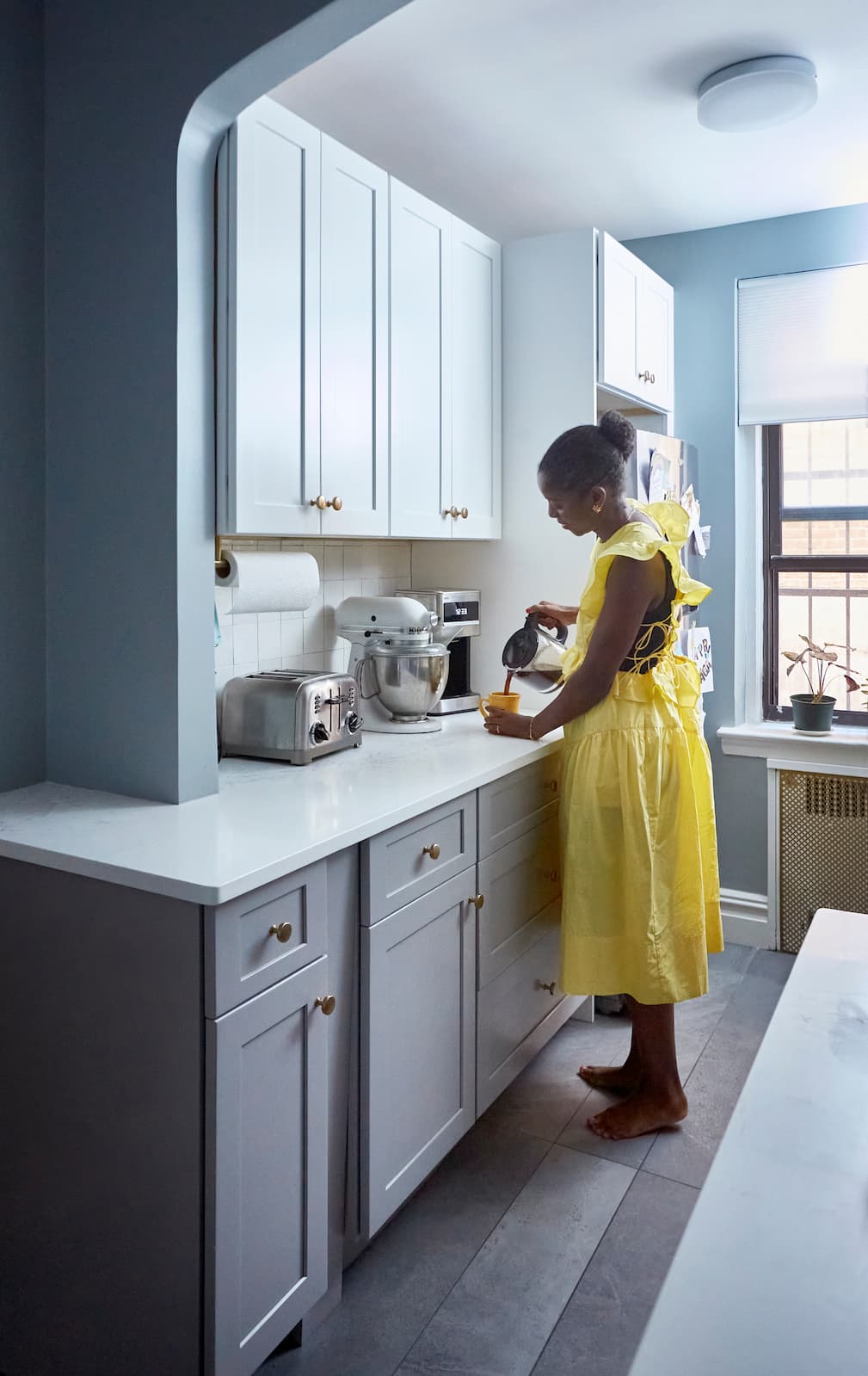
Renovate confidently with Block
Easily compare quotes from top quality contractors, and get peace of mind with warranty & price protections.
Thousands of homeowners have renovated with Block

4.5 Stars (100+)

4.7 Stars (100+)

4.5 Stars (75+)

Remodeling
How to Renovate in Brooklyn
05.22.2025
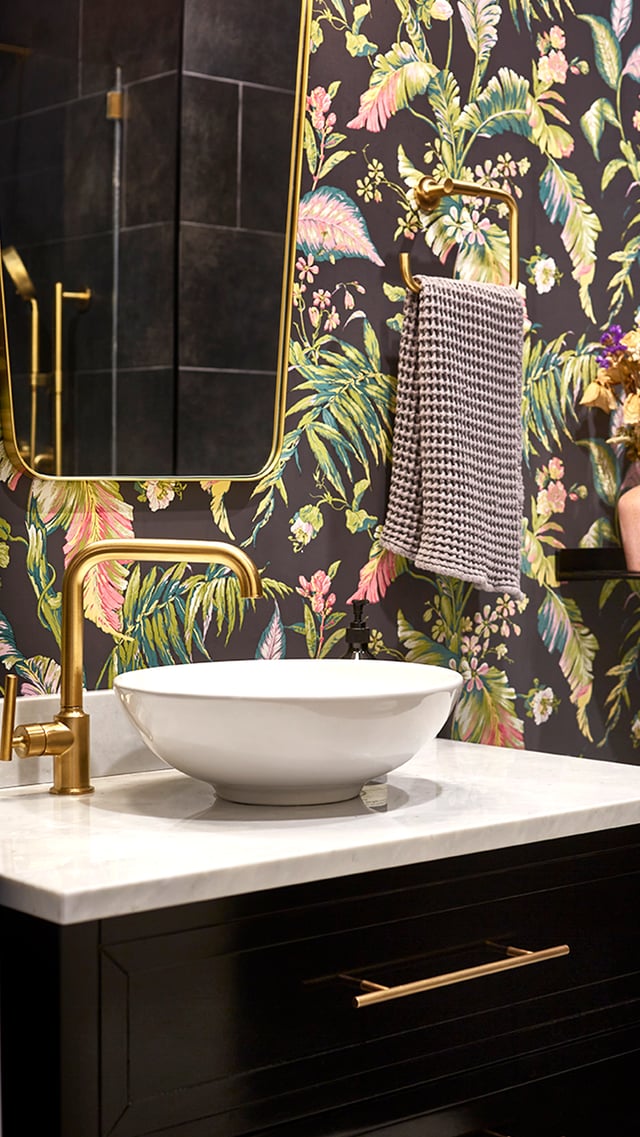
Bathroom
What Is a Half Bath and Is It Right for Your Bathroom Remodel?
05.22.2025

Bathroom
What Is a Three-Quarter Bath and Is It Right for Your Home?
05.22.2025
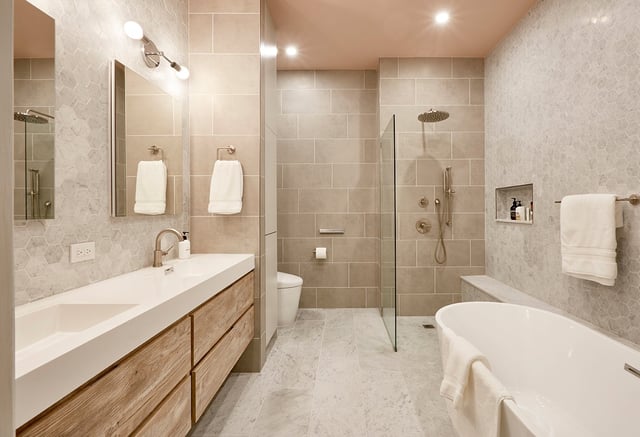
Bathroom
A Complete Guide to Boston Area Bathroom Remodels
05.16.2025
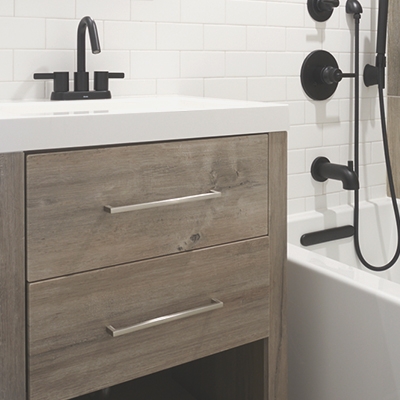
Bathroom
Bathroom Vanity Ideas to Consider Before a Small Bathroom Remodel
05.15.2025
Renovate confidently